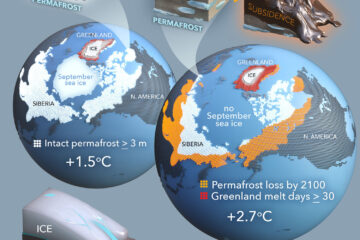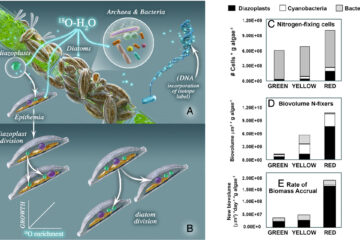Holocene Carbon Stocks and Carbon Accumulation Rates Altered in Soils Undergoing Permafrost Thaw
Permafrost soils are a significant global store of carbon (C) with the potential to become a large C source to the atmosphere. Climate change is causing permafrost to thaw, which can affect primary production and decomposition, therefore affecting ecosystem C balance. To understand future responses of permafrost soils to climate change, we inventoried current soil C stocks, investigated ∆14C, C:N, δ13C, and δ15N depth profiles, modeled soil C accumulation rates, and calculated decadal net ecosystem production (NEP) in subarctic tundra soils undergoing minimal, moderate, and extensive permafrost thaw near Eight Mile Lake (EML) in Healy, Alaska. We modeled decadal and millennial soil C inputs, decomposition constants, and C accumulation rates by plotting cumulative C inventories against C ages based on radiocarbon dating of surface and deep soils, respectively. Soil C stocks at EML were substantial, over 50 kg C m−2 in the top meter, and did not differ much among sites. Carbon to nitrogen ratio, δ13C, and δ15N depth profiles indicated most of the decomposition occurred within the organic soil horizon and practically ceased in deeper, frozen horizons. The average C accumulation rate for EML surface soils was 25.8 g C m−2 y−1 and the rate for the deep soil accumulation was 2.3 g C m−2 y−1, indicating these systems have been C sinks throughout the Holocene. Decadal net ecosystem production averaged 14.4 g C m−2 y−1. However, the shape of decadal C accumulation curves, combined with recent annual NEP measurements, indicates soil C accumulation has halted and the ecosystem may be becoming a C source. Thus, the net impact of climate warming on tundra ecosystem C balance includes not only becoming a C source but also the loss of C uptake capacity these systems have provided over the past ten thousand years.


